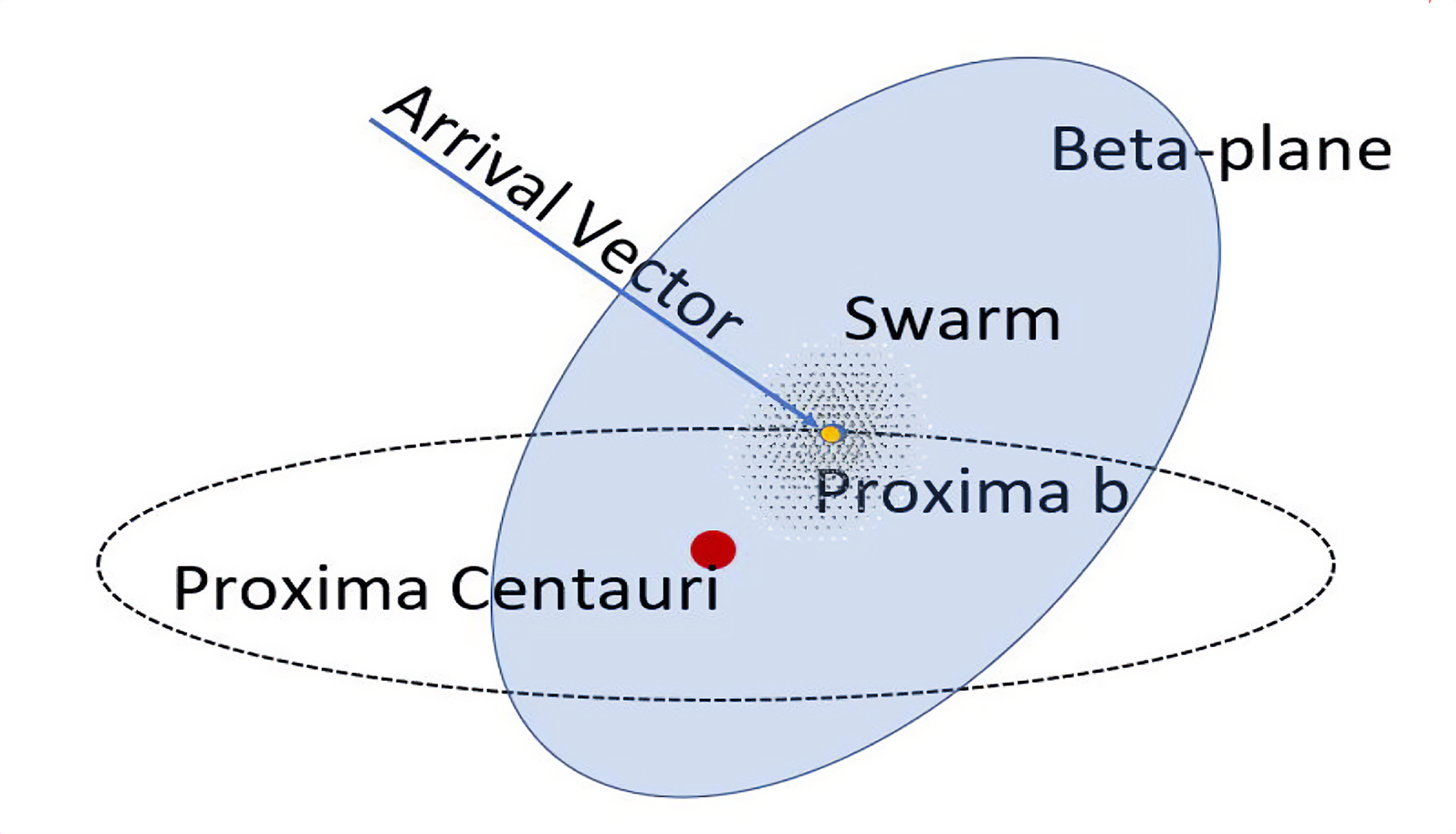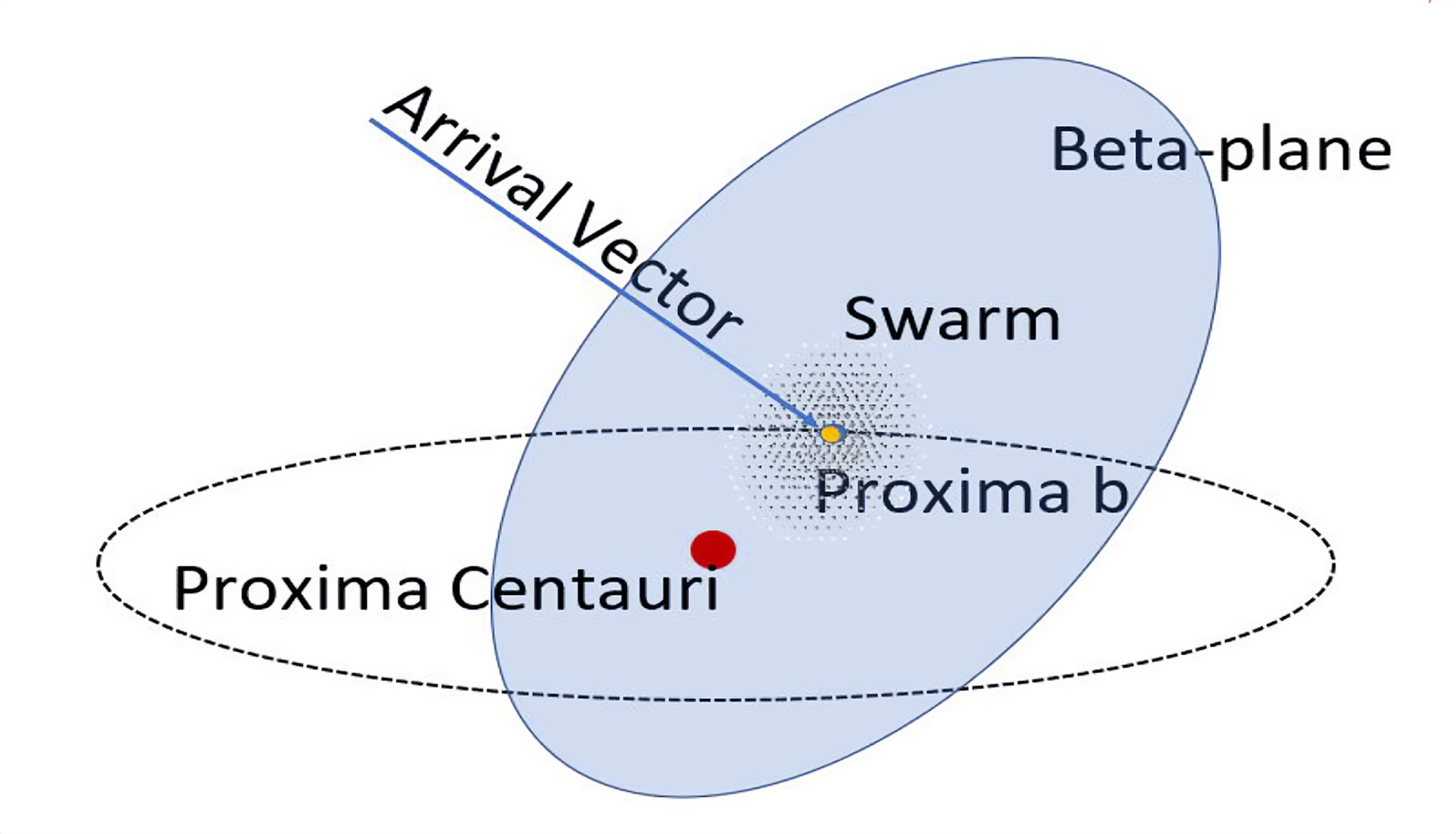Swarming Proxima Centauri: Coherent Picospacecraft Swarms Over Interstellar Distances
Thomas EubanksSpace Initiatives, Inc. Tiny gram-scale interstellar probes pushed by laser light are likely to be the only technology capable of reaching another star this century. We presuppose availability by mid-century of a laser beamer powerful enough (~100-GW) to boost a few grams to relativistic speed, lasersails robust enough to survive launch, and terrestrial light […]

4 min read
Preparations for Next Moonwalk Simulations Underway (and Underwater)

Thomas Eubanks
Space Initiatives, Inc.
Tiny gram-scale interstellar probes pushed by laser light are likely to be the only technology capable of reaching another star this century. We presuppose availability by mid-century of a laser beamer powerful enough (~100-GW) to boost a few grams to relativistic speed, lasersails robust enough to survive launch, and terrestrial light buckets (~1-sq.km) big enough to catch our optical signals. Then our proposed representative mission, around the third quarter of this century, is to fly by our nearest neighbor, the potentially habitable world Proxima b, with a large autonomous swarm of 1000s of tiny probes.
Given extreme constraints on launch mass (grams), onboard power (milliwatts), and coms aperture (centimeters to meters), our team determined in our work over the last 3 years that only a large swarm of many probes acting in unison can generate an optical signal strong enough to cross the immense distance back to Earth. The 8-year round-trip time lag eliminates any practical control by Earth, therefore the swarm must possess an extraordinary degree of autonomy, for example, in order to prioritize which data is returned to Earth. Thus, the reader will see that coordinating the swarming of individuals into an effective whole is the dominant challenge for our representative mission to Proxima Centauri b. Coordination in turn rests on establishing a mesh network via low-power optical links and synchronizing probes’ on-board clocks with Earth and with each other to support accurate position-navigation-timing (PNT).
Our representative mission begins with a long string of probes launched one at a time to ~0.2c. After launch, the drive laser is used for signaling and clock synchronization, providing a continual time signal like a metronome. Initial boost is modulated so the tail of the string catches up with the head (“time on target”). Exploiting drag imparted by the interstellar medium (“velocity on target”) over the 20-year cruise keeps the group together once assembled. An initial string 100s to 1000s of AU long dynamically coalesces itself over time into a lens-shaped mesh network #100,000 km across, sufficient to account for ephemeris errors at Proxima, ensuring at least some probes pass close to the target.
A swarm whose members are in known spatial positions relative to each other, having state-of-the-art microminiaturized clocks to keep synchrony, can utilize its entire population to communicate with Earth, periodically building up a single short but extremely bright contemporaneous laser pulse from all of them. Operational coherence means each probe sends the same data but adjusts its emission time according to its relative position, such that all pulses arrive simultaneously at the receiving arrays on Earth. This effectively multiplies the power from any one probe by the number N of probes in the swarm, providing orders of magnitude greater data return.
A swarm would tolerate significant attrition en route, mitigating the risk of “putting all your eggs in one basket,” and enabling close observation of Proxima b from multiple vantage points. Fortunately, we don’t have to wait until mid-century to make practical progress – we can explore and test swarming techniques now in a simulated environment, which is what we propose to do in this work. We anticipate our innovations would have a profound effect on space exploration, complementing existing techniques and enabling entirely new types of missions, for example picospacecraft swarms covering all of cislunar space, or instrumenting an entire planetary magnetosphere. Well before mid-century we foresee a number of such missions, starting in Earth or lunar orbit, but in time extending deep into the outer Solar system. For example, such a swarm could explore the rapidly receding interstellar object 1I/’Oumuamua or the solar gravitational lens. These would both be precursors to the ultimate interstellar mission, but also scientifically valuable in their own right.
What's Your Reaction?













































